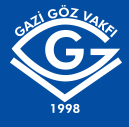Materials and Methods: 12844 eyes of 6422 newborns who were born in Zekai Tahir Burak Women's Health Education and Research Hospital between January 2006 and December 2011 were examined. 6097 newborns were scanned for retinopathy of prematurity (ROP) and 325 newborns were consulted for eye examination from the neonatology department. Our study is a descriptive study based on records.
Results: Congenital eye anomalies were detected in 101 eyes (7.86%). Of these 101 eyes, 57 eyes were diagnosed in consulted babies for anomaly screening and 44 eyes were diagnosed during ROP screening. Anterior segment anomalies were detected in 52 eyes (51.4%), posterior segment anomalies were determined in 19 eyes (18.8%) and both the anterior and posterior segment anomalies were found in 30 eyes (29.7%). The most frequently detected anomaly was coloboma (28.7%) and 3 eyelid, 10 iris, 4 chorioretinal, 6 iris-chorioretinal, 3 optic disk, and 3 iris-chorioretinal-optic disc coloboma were observed. In 12194 eyes scanned for ROP, the anomaly rate was 3.32% and the most frequently anomaly was coloboma (1.06%). In 650 eyes examined for anomaly screening, the anomaly rate was 8.76% and the most common anomaly was coloboma (2.0%).
Conclusion: The most common congenital eye anomalies observed in this study were coloboma and microphtalmia. Detailed systemic and eye examination is essential in anomalous newborns for early diagnosis and treatment of associated lesions.
Keywords : Coloboma, congenital eye anomaly, neonatal, retinopathy of prematurity




